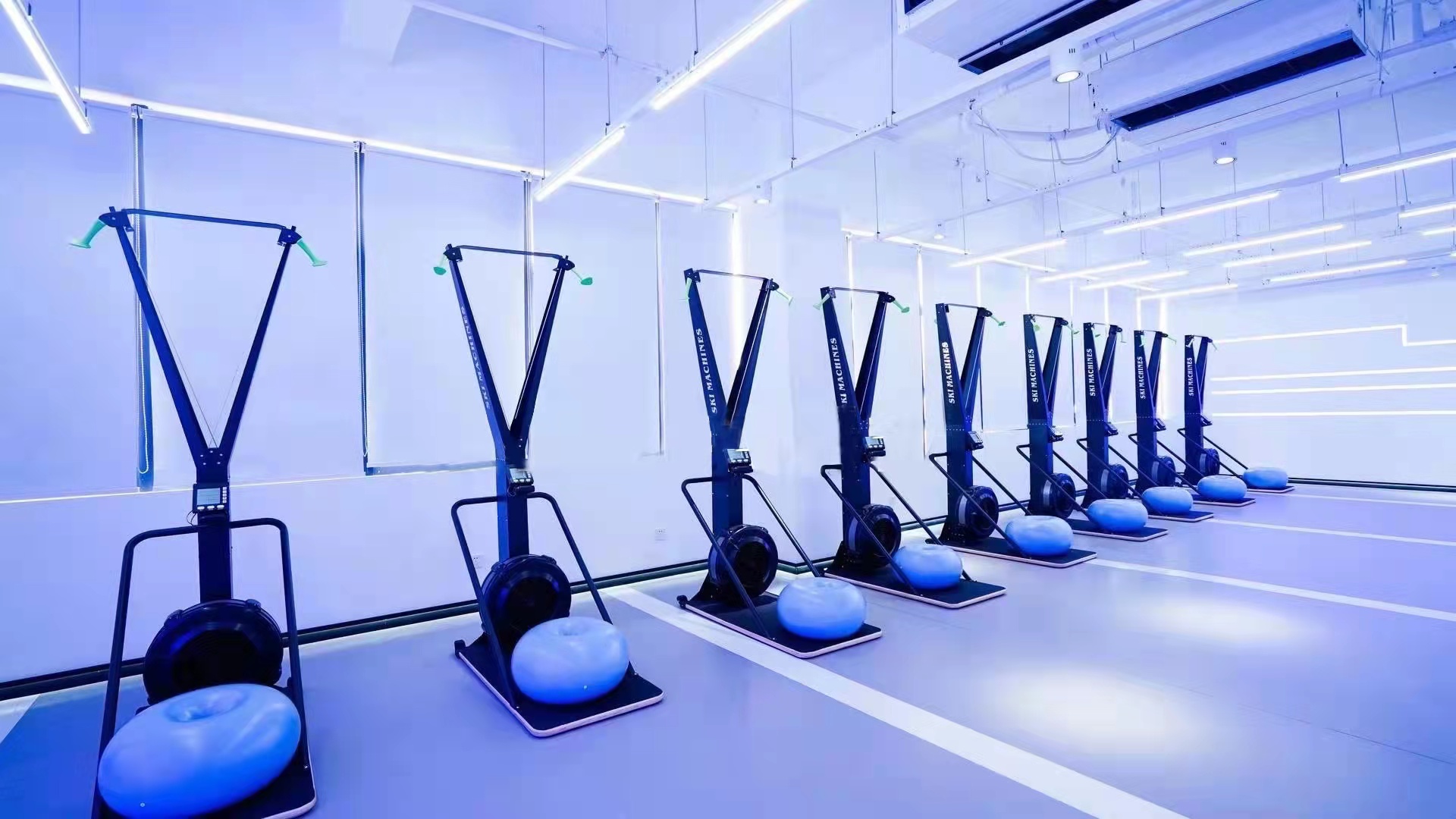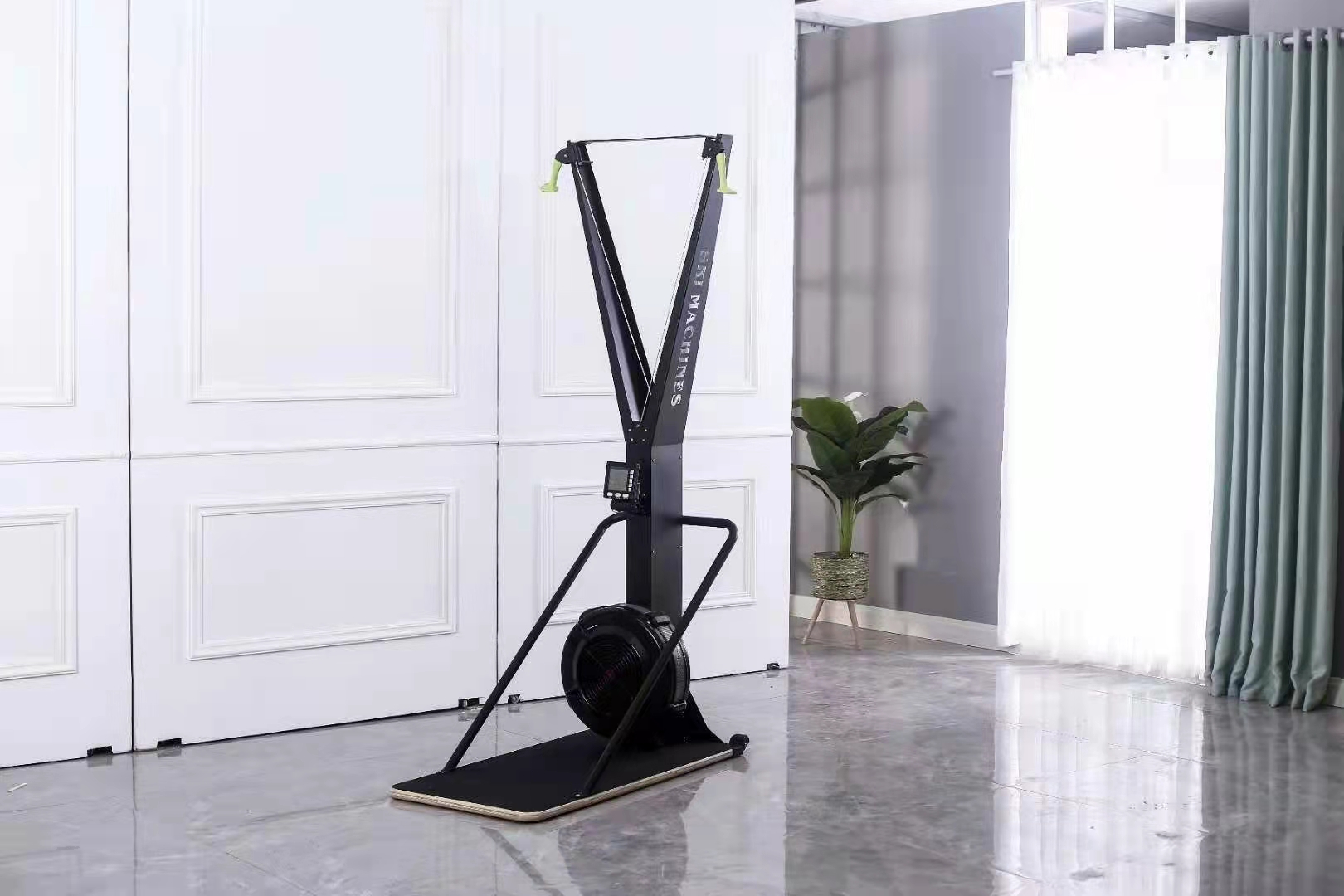Wind resistance ski machine is a fitness equipment that simulates skiing, mainly used for indoor skiing training
working principle
Similar to wind resistance rowing machines, wind resistance skiing machines generate resistance by pulling ropes to drive a flywheel with blades at the front end to rotate. When the user pulls the handle, the rope drives the impeller inside the wind resistance device to rotate, creating resistance to air flow, and the faster the pulling speed, the greater the resistance.
Structural characteristics
Main frame: It is usually made of sturdy metal materials to ensure stability and safety during high-intensity training. It is generally designed in an upright position with a small footprint, making it easy to place indoors.
Handle and rope: The handle design conforms to ergonomics, making it convenient for users to grip and exert force. The rope material is tough and has a certain degree of flexibility, which can withstand large tensile forces.
Pedal: A wide and non slip surface pedal that provides users with a stable standing platform to prevent their feet from slipping during training.
Resistance adjustment device: The wind resistance can be adjusted manually or electrically to adapt to different training stages and the physical condition of the trainer.
advantage
The exercise effect is significant: it can effectively exercise muscle groups in multiple parts such as legs, buttocks, waist, and arms, enhance muscle strength and endurance, and improve body coordination and balance.
Low impact exercise: Compared with outdoor skiing, it has less impact on joints, reduces the risk of injury, and is suitable for more people to exercise, including those with poor joints or heavy weight.
Unrestricted by season and location: Ski training can be conducted indoors at any time without the need to go to the ski resort, and is not affected by weather, season, or region, making it convenient for people to continue exercising.
Diverse training modes: Training intensity, time, and resistance can be adjusted according to individual needs and goals to achieve diverse training modes, such as endurance training, strength training, or interval training.
shortcoming
Noise issue: During use, the wind resistance device may generate certain noise, which may cause interference to the user or the surrounding environment.
Poor resistance stability: Compared to some other types of ski simulators, the resistance of a drag ski machine may be affected by environmental factors such as air humidity, temperature, etc., resulting in unstable resistance.
Applicable scenarios
Family fitness: For skiing enthusiasts, skiing training can be done at home at any time to maintain skiing condition and physical fitness, and improve skiing skills.
Gym Training: Enrich the variety of training equipment in the gym, provide innovative training programs for members, and meet the fitness needs of different members.
Ski training: It can serve as an auxiliary training equipment for ski training institutions, helping students familiarize themselves with skiing movements and techniques before entering the ski resort, and improving training effectiveness.
Precautions for use
Correct posture: Stand firmly on the pedals with both feet, slightly bend your knees, lean your body forward slightly, hold the handles with both hands, keep your back straight, avoid bending or hunching, and prevent excessive pressure on your waist.
Moderate training: When using it for the first time, start with lower resistance and shorter training time, gradually increase training intensity and time, and avoid excessive fatigue and injury.
Breathing coordination: During the training process, pay attention to the breathing rhythm, usually exhaling when pulling hard and inhaling when relaxing and returning, to maintain smooth breathing.
